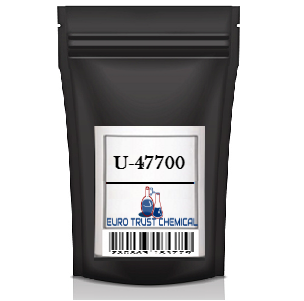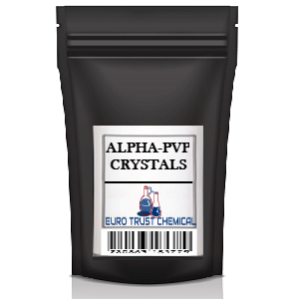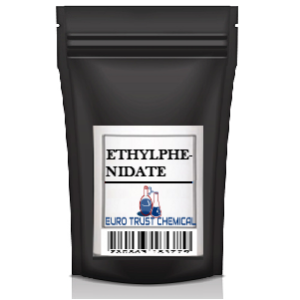Description
BUY U-47700 ONLINE
U-47700 is member of the drug class opioid analgesics. Specifically U47700 belongs to the benzamide class of opioids. It is not used medically but within scientific research.
U-47700 has the systematic and formal IUPAC name 3,4-Dichloro-N-[(1R,2R)-2-(dimethylamino)cyclohexyl]-N-methylbenzamide. It has a molar mass of 329.27 grams and an empirical chemical formula of C16H22Cl2N2O.
It was first developed by a team of researchers at the pharmaceutical firm Upjohn in the late 1970s.
In animal models U47700 was shown to have potency 7.5 times greater than the classical medicinal opiate morphine.
Pharmacologically U47700 is a selective agonist at the µ-opioid receptor with a Kd of 5.3 nM in contrast to a much weaker binding interaction at the kappa opioid receptor where U47700 have a Kd value of 910 nM.
U47700 is a structural analogue of an earlier opioid AH-7921.
This compound is not fit for human or animal consumption.
Online reports whilst subjective and unverifiable do point to a number of qualities of this chemical.
U47700 is reported to produce feelings of euphoria, pain relief and suppression of anxiety. Some users have reported effects comparable to the widely abused pharmaceutical oxycodone.
Euphoria is reported as less intense in comparison to morphine or heroin. The sensation produced is described as feelings of “warmth” and “comfort” which passes through the body.
U47700 is reported as causing significantly greater sedation than comparable opiates like oxycodone or hydrocodone.
Other effects include a reduction in libido, constriction of the pupils, difficulty urinating, suppression of cough and constipation. This is in keeping with the general side effects of opiates.
U47700 can cause make the skin feel very itchy due to release of histamine.
Respiratory depression is a serious side effect of many opioids and is responsible for the lethality of these compounds. Despite there being no formal studies in to the physiological action of U47700 in humans anecdotal reports point to a propensity of U47700 to produce much stronger respiratory depression than heroin or morphine. This makes U47700 a dangerous compound and users need to approach with extreme caution. At low doses it is reported that U47700 slows the breath moderately but will not produce a very noticeable impairment. Higher doses and overdoses overpower the user with abnormal breathing patterns reported, shortness of breath and loss of consciousness. This can quickly lead to fatal brain damage.
U47700 like other opioids does produce a number of undesirable after effects that are colloquially known as the “crash”. These include agitation, irritability, negative emotional states, cognitive fatigue, difficulty thinking, anxiety, depression and lack of motivation.
U47700 has a marked toxicity relative to dose due to its extreme potency in comparison to traditional opioids and opiates. This makes it a less than ideal recreational compound with significant risk of harm to the user. Therefore caution should be exercised with respect to dose. Lethality of the compound is also exacerbated by concurrent use of other depressants such as alcohol, benzodiazipines, GHB/GBL and dissociatives such as ketamine.
Additional information
| SELECT QUANTITY | 10 Grams, 25 Grams, 50 Grams, 100 Grams, 250 Grams, 500 Grams, 1000 Grams |
|---|





